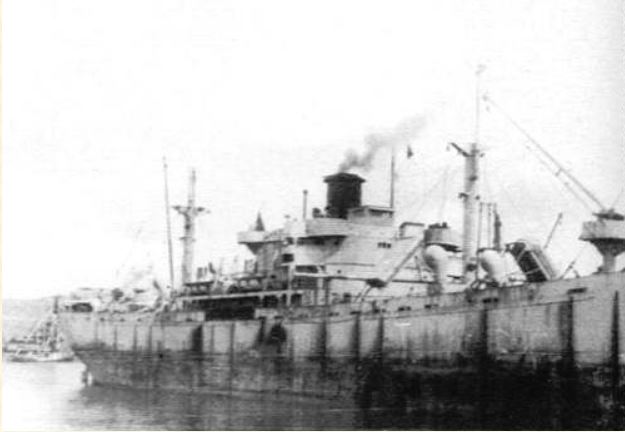SS James Fenimore Cooper
From Our Contribution
Contents
[hide]Remarks
Though British in concept, the design was adapted by the United States for its simple, low-cost construction. Mass-produced on an unprecedented scale, the Liberty ship came to symbolize U.S. wartime industrial output. The class was developed to meet British orders for transports to replace ships that had been lost. Eighteen American shipyards built 2,710 Liberty ships between 1941 and 1945, easily the largest number of ships ever produced to a single design. Stern-mounted 4 inch (102 mm) deck gun for use against surfaced submarines, variety of anti-aircraft guns.
In September 1943 strategic plans and shortage of more suitable hulls required that Liberty ships be pressed into emergency use as troop transports with about 225 eventually converted for this purpose. Others in the Southwest Pacific were turned into makeshift troop transports for New Guinea operations by installing field kitchens on deck, latrines aft between #4 and #5 hatches flushed by hoses attached to fire hydrants and about 900 troops sleeping on deck or in 'tween deck spaces.
More than 2,400 Liberty ships survived the war. Of these, 835 made up the postwar cargo fleet. Greek entrepreneurs bought 526 ships and Italians bought 98. In 1946 liberty ships were mothballed in the Hudson River Reserve Fleet near Tarrytown, New York. At its peak in 1965 189 hulls were stored there. The last two were sold for scrap to Spain in 1971 and the reserve permanently shut down.
Notes
Armament: Stern-mounted 4inch (102 mm) deck gun for use against surfaced submarines, plus a variety of anti-aircraft guns.

